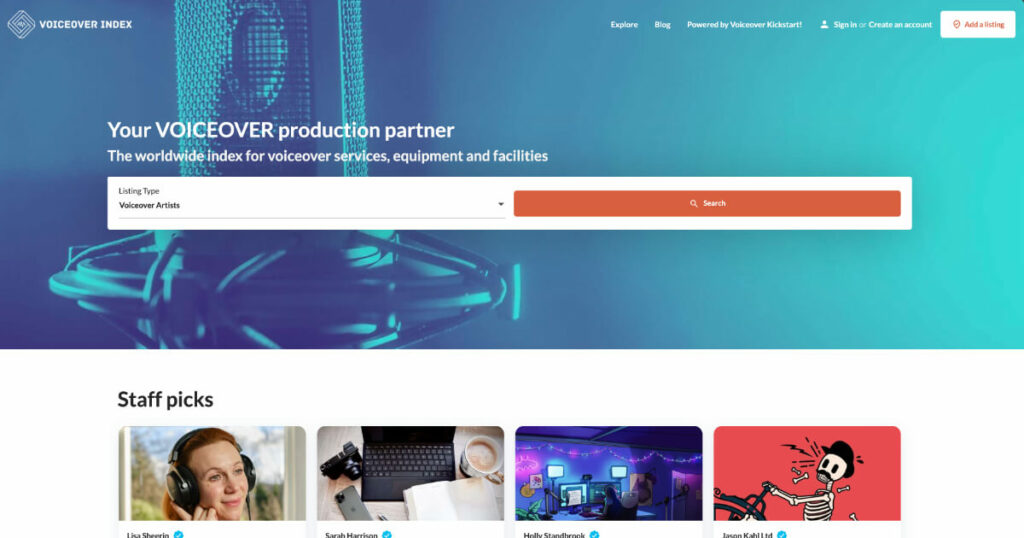As a voiceover artist I work alongside many folk in video production in a range of roles from casting directors to scriptwriters and videographers.
It’s important to have an understanding of not only the field you work in but the related fields too. It makes communication between parties easier and also you come across as ‘invested’.
After all, you are all working towards the same goal – that of an effective production which has the client’s desired effect upon the target audience.
Incidentally, if you work in any of these fields you can now get listed for free on my media production directory Voiceover Index! (it’s not just for voice actors but for all those in related industries)
Media production terminology
These terms cover various aspects of of production including shooting and editing footage as well as manipulating sound elements. Understanding these terms is crucial for anyone engaged in production, be it for movies, television, voiceover or online content. These terms are widely used in the industry and understanding them can greatly enhance your knowledge of the production process.
Here is a comprehensive glossary of production terms in both audio and video worth knowing:
ADR: Additional dialogue recording (or Automated Dialogue Replacement), which is used to replace or add dialogue during the post production stage.
Ambient sound: It refers to the background noise or sounds present in a specific location, which helps create a sense of space and atmosphere.
Audio: The utilization of sound waves during the process of creating media content.
Aspect Ratio: The proportional relationship between the width and height of an image or screen in media production.The aspect ratio refers to the relationship between the width and height of a video or image.
B-roll footage is additional footage used to complement the main footage.
Boom mic: This is a long pole with an attached microphone, primarily used to capture audio from a distance.
Camera angle pertains to the position from which the camera records.
Chroma key is a technique employed to replace a specific color in a video with another image or video.
Color grading: It involves adjusting the color and tone of video footage during post production to achieve the desired look or mood.
Cross cutting: This technique involves alternating between different scenes during editing to create tension or build suspense.
A close-up shot involves the camera being near the subject, often capturing details of their face or an object.
A cut represents a transition between two shots.
A dolly shot occurs when the camera moves on a dolly.
Depth of field: It refers to the range between the nearest and farthest objects that appear sharply focused in a shot.
Dutch angle: A camera angle where the camera is tilted intentionally to create a sense of unease or disorientation.
An establishing shot is utilized to set up a location or setting in a video.
Foley refers to creating sound effects during post production.
Foley artist: These are individuals who specialize in creating sound effects during post production.
Frame rate denotes the number of frames recorded per second in a video.
Gaffer: The gaffer is responsible for setting up and controlling lighting on set during filming.
Green screen: A widely used technique where a solid colored background is replaced with another image or video during post production.
Headroom: The space between the top of an individual’s head and the top frame edge, which helps create balance within composition. (not the same as headroom in audio!)
A jump cut creates an impression that the subject jumps in position or time during editing. In a long shot, the subject appears small in relation to their surroundings.
Jib: A camera crane that enables sweeping shots or overhead views for capturing dynamic footage.
Key light: Key light refers to primary light source used for illuminating subject
L cut: Audio transition technique where audio from previous shot continues into next shot creating seamless transition
Master shot: Shot capturing entire scene/location serving as reference point for editing
Montage involves using sequences of shots to convey messages or ideas effectively.
Over the shoulder shot: Shot taken from behind one character’s shoulder showing the other character in the scene
Pan refers to horizontal camera movement during recording.
Post production: Stage after filming where editing, sound design and visual effects are added
Rack focus: A technique used to shift the focus from one object to another within a single shot.
A shot represents continuous recording from one perspective using a camera.
Sound design involves creating soundscapes and sound effects for media production.
Storyboard is the visual representation used for scripts or storytelling purposes.
The teleprompter displays scripts or text for talent to read while facing the camera.
Timecode system helps label and organize video footage effectively.
Voiceover refers to narration added alongside videos and other media productions.
Zoom entails adjusting focal length on cameras, making subjects appear closer or farther away.

